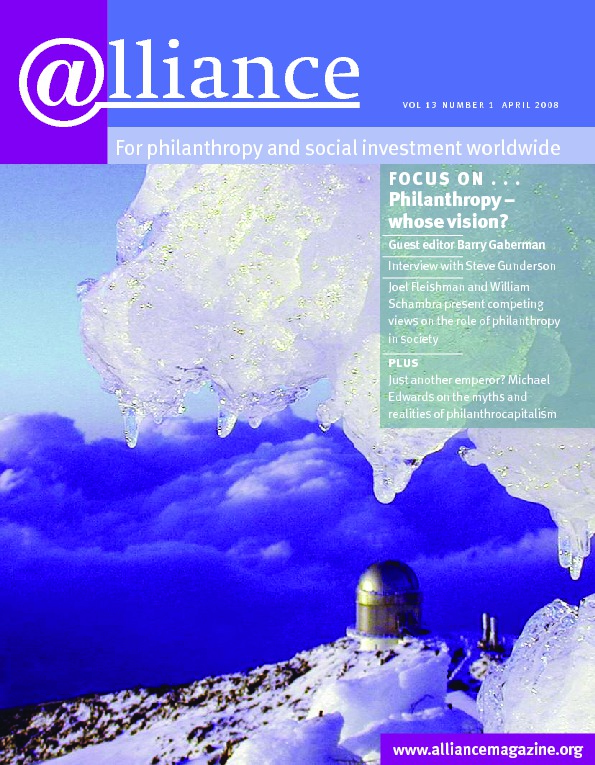Over the years it has surprised me how limited the opportunities are for information exchange between foundation Board members, for peer learning, and, even more important, for the professional development of Board members. In my opinion, this reflects the lack of importance that foundations (ie foundation executives) attach to their Boards, and that Board members themselves attach to their roles. One obstacle to Board members becoming more engaged is that they are often not aware of their responsibilities.
In the corporate world, Board responsibilities are rather strictly defined, but in the non-profit world, they require discussion and definition. It may be clear that the Board has the ultimate responsibility for the organization but the degree to which it delegates authority to the management varies. I do not want to delve too deeply into this issue, only to remark that there is a tendency, certainly among larger foundations, for Boards to keep a distance and differentiate between governance and management. Increasingly we see Boards focusing on oversight of management, on ensuring the accountability of the organization, and on ensuring that the strategies and activities of the organization are in line with its mission and objectives.
The main point I want to make is that Boards should realize that governance is not restricted to a foundation’s spending but also includes its investments. Even where Boards keep their distance from the actual operations of a foundation, responsibility for investment policies is a fiduciary responsibility.
The implementation of an investment policy – the management of the portfolio itself – can be delegated to ‘professionals’, but the responsibility for investment of foundation endowments, ie the management of the investment process, cannot be delegated. Even where Boards have established an Investment Committee, the Board as a whole still has to be aware of its fiduciary responsibilities.
Fiduciary responsibilities comprise a number of elements: formulation of the investment objectives on the basis of desired payouts, required returns and tolerated risks; formulation of an appropriate asset allocation; approving a structure of money managers; and monitoring the overall investment programme for compliance with the investment policy.
Unfortunately, Boards sometimes believe that they can delegate the investment side altogether to an outsider, very often a former banker or a retired treasurer. Sometimes it is even delegated to an investment consultant, without a proper countervailing power on the Board. Doing this, Boards believe, allows them to focus on the spending side, on achieving the charitable objectives, assuming that the money to be spent is a given and the result of an external process.
I recommend, therefore, that Boards as fiduciaries should retain a strategic role in the management of the investment process, while allowing outsiders to play a role in the management of the investment portfolio (stock selection, investment manager selection, performance measurement, etc).
Over the last two years, the discussion about alignment between investment and spending policies (instead of having an iron curtain between the two) in the foundation world has intensified. It has led to increased interest in socially responsible investment (SRI) and mission-related investment (MRI). Yet few foundation boards address the issue formally or see it as part of their fiduciary responsibility.
An article by Andrew Milner in Alliance (September 2006), entitled ‘Foundation investment managers, it’s up to you’, suggested that most investment advisers do not see it as their role to encourage foundations to think about aligning their investment policy with their spending policy. In my opinion, that is only one of the reasons that foundations have been slow to consider SRI and/or MRI. The other is that, as I suggested earlier, investment policy is often delegated by Boards to outside ‘professionals’. If you institutionalize the separation of spending and investment policies, you cannot expect a connected approach to the investment of assets and the spending of returns for charitable purposes. Under such circumstances, foundations are missing the possibility of using the corpus of their assets as an additional means of furthering their statutory objectives.
Rien van Gendt is an independent consultant and Chair, Dutch Association of Foundations. Email vangendt@xs4all.nl





Comments (0)